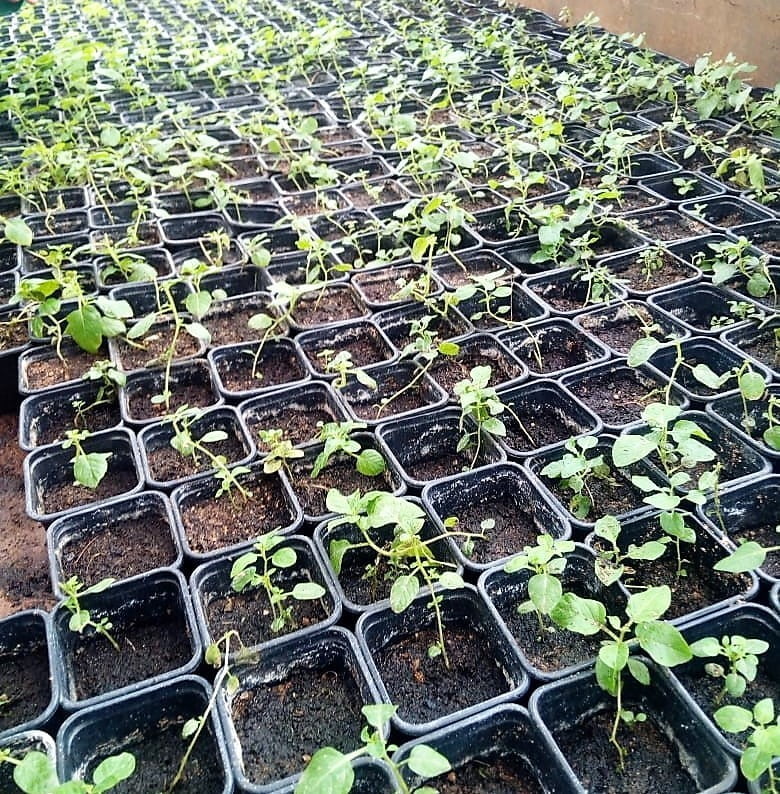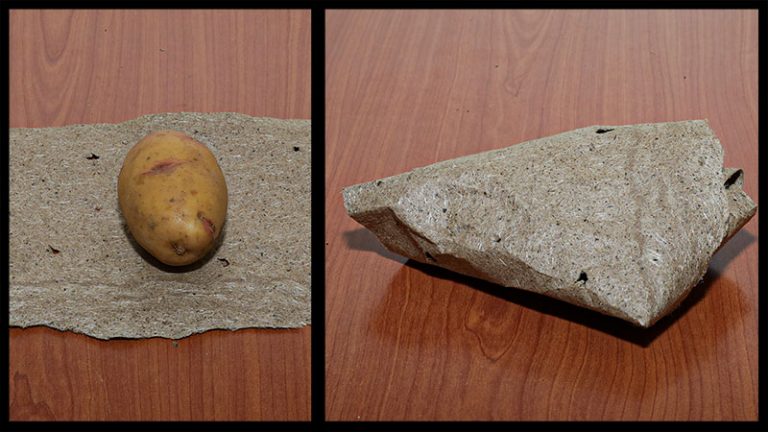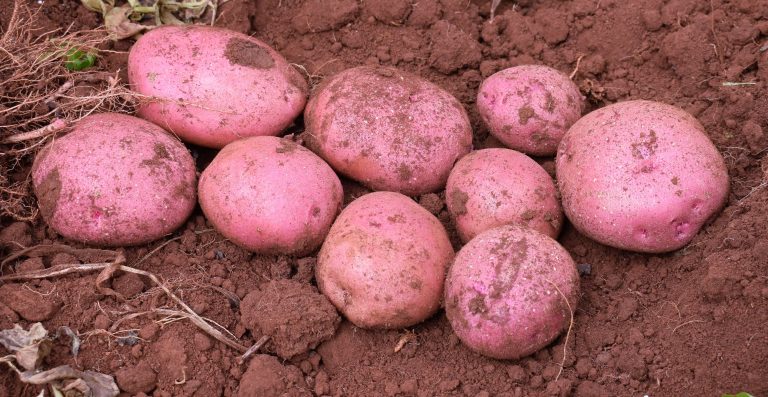Addressing seed shortages for potato is a perennial challenge throughout sub-Saharan Africa (SSA). Kenya which leads in certified seed production meets approximately 2% of effective seed demand, which has slowly increased from 0.6% in 2009, with other SSA countries lagging further behind on seed supply. Current seed systems rely on producing minitubers from tissue culture plants in the screen house, followed by three to four seasons of multiplication in the field to produce certified seed. Seed merchants normally start from basic seed available after two seasons of multiplying tubers from minitubers to produce certified seed. Apical cuttings are an alternative to minitubers in current production systems.
Description of rooted apical cuttings
A cutting is a transplant produced in a screen house from tissue culture plants and handled the same way in the field as a nursery-grown seedling. Cuttings are clean and free of disease. Cuttings are planted in the field in slightly raised beds to produce high numbers of seed tubers. Cuttings mature quickly in the field, with egg-sized tubers observed 35 to 45 days after planting in some varieties. Rooted potato cuttings are economical.
1,000 cuttings are projected to produce 85 to 130 50-kg bags of seed potato after two seasons of multiplications. Planting 1,000 cuttings requires 120 meters squared for the first season, then 0.25 to 0.35 ha (0.6 to 0.9 acres) for the second season. Compared to minitubers, where the same initial area of 120 meters squared is projected to produce 80 to 90 50-kg bags after two seasons of multiplication.
Productivity of cuttings in the field
Apical cuttings produce 10 to 25+ tubers per cutting, compared to 5 to 10 tubers per minituber. With high productivity of cuttings, selling seed after two seasons of multiplication becomes economical, and after three seasons highly profitable, noting certified seed from minitubers is sold after three to four seasons of multiplication. With farmers accessing earlier generation seed, harvested tubers can be multiplied on-farm for a further few seasons reducing risk of seed degeneration, provided good agricultural practices and rotation are followed, making seed systems based on cuttings compatible with on-farm seed-saving smallholder systems.
Apical cutting versus stem cutting
Apical cuttings originate from tissue culture material, ie the mother plant is maintained in a juvenile state throughout the production cycle. The high productivity potential is in the physiologically young tissue, as mother plants mature, tuber yield of the resulting cuttings reduces. Stem cuttings generally implies that the mother plant has developed compound leaves, physiologically older. Normally mother plants for stem cuttings originate from a tuber, develop compound leaves, and sprouts and shoots are taken as cuttings. Stem cuttings originating from mother plants with compound leaves generally yield 3-5 tubers per stem and should not be confused with apical cuttings producing 10-25+ tubers per cutting.
Way forward to developing and scaling out apical cuttings
Key to the success of this technology is building market demand for cuttings, which relies on diversifying end uses. Currently the technology targets seed systems as starter material for seed multipliers. Expanding to where farmers who practice saving seed on-farm will increase opportunities for rural and urban private sector to invest in producing cuttings on small and large scales. Investing in rooted cuttings for seed production could be interesting for youth as little land is required, and profit margins are high when producing seed from cuttings. Youth could even embark on businesses to produce cuttings.






